Review of the 4 Pistol Grips for the Remington 870 Shotgun, Part 2
Read first part here: Review of the 4 Pistol Grips for the Remington 870 Shotgun
Thanks to Synchronizor for this detailed review!
Control Interaction:
There are three controls that an 870 user manipulates with their shooting hand: the trigger, the safety switch, and the slide release. With the traditional semi-grip shotgun stocks that the 870 was designed to use, these controls are all easy to reach and manipulate. Pistol grips, whether part of a stock or stand-alone, can have a significant effect on how – and how easily – these controls are manipulated. Pistol grips rarely interfere with the gun’ s trigger for obvious reasons, but they can – and frequently do – make working the safety or slide release slower or more difficult.
Hogue Tamer Pistol Grip and Forend for Remington870
| You can get Hogue Tamer Pistol Grip Forend on Brownells |
Pachmayr Vindicator Grip for Remington 870
| You can get Pachmayr Vindicator Grip for Remington 870 on Brownells |
The 870’ s cross-bolt safety is located right behind the trigger, and with a traditional stock that’ s no wider than the receiver and doesn’ t enclose the rear of the trigger guard, it is possible to apply pressure on the safety with the side of the finger, rather than the tip. This allows the user to disengage the safety while keeping their fingertip on or very near the trigger, so a shot can be made virtually immediately. With traditional stocks, the safety is also fairly easily reached with the thumb or middle finger for re-engagement, or for disengagement in the case of left-handed shooters using an 870 with a right-handed safety switch.
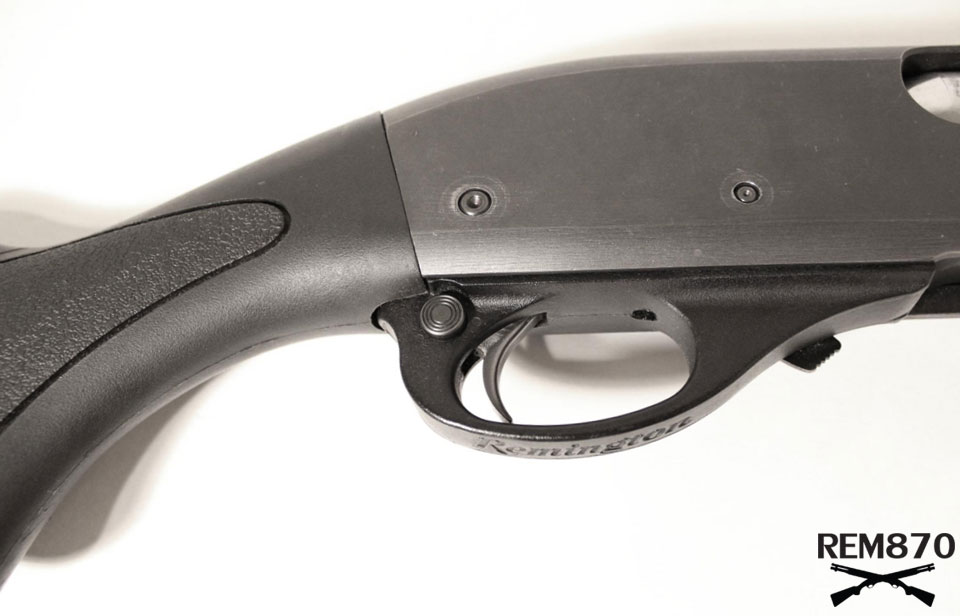
Pistol grips tend to place material directly behind the safety button, which sometimes spaces the trigger finger further out, making it more difficult to reach the switch with the fingertip on the trigger. This can often be addressed by installing an extended or enlarged safety button, but if so, that effectively adds to the cost of the grip, and it may give you another thing to change out if you switch between a pistol grip and a traditional stock on your gun.
The 870’s slide release, located on the front left of the trigger guard, requires the user to shift their grip in order to reach it. Among other advantages, this prevents the user from accidentally unlocking the action at an inopportune moment, and ensures that no stock or grip will block or obscure this control or drastically change how it is manipulated. With traditional semi-grip stocks, it is easy to move the dominant hand forward, with the thumb riding up over the top of the receiver, to reach the slide release. Then, once the action is unlocked, the hand slides smoothly & naturally back to a shooting grip. This technique is applicable for both right- and left-handed shooters and allows the user to maintain a secure hold on the gun at all times. Though it can seem awkward at first, with practice, it can become very quick and reflexive. It’s also surprisingly easy to do one-handed.
Pistol grips move the shooter’s thumb down below the receiver, and many overhang the hand to some extent, which blocks the thumb from simply sliding up and over the receiver. Instead, the thumb must either stretch up and over the top of the grip, or swing around the side of it. Either way, the user releases & re-acquires their hold on the gun twice, which requires more complex motor skills (a definite downside when rushed or stressed), adds steps & time to the procedure, and requires that the gun be actively supported with the other hand.
So, let’s see how these pistol grips measure up.
Hogue:
The Hogue grip extensively encases the rear of the trigger plate assembly in hard plastic, and it is quite wide behind the safety button. There is a well in the plastic for the trigger finger that helps quite a bit, but it isn’t perfect.
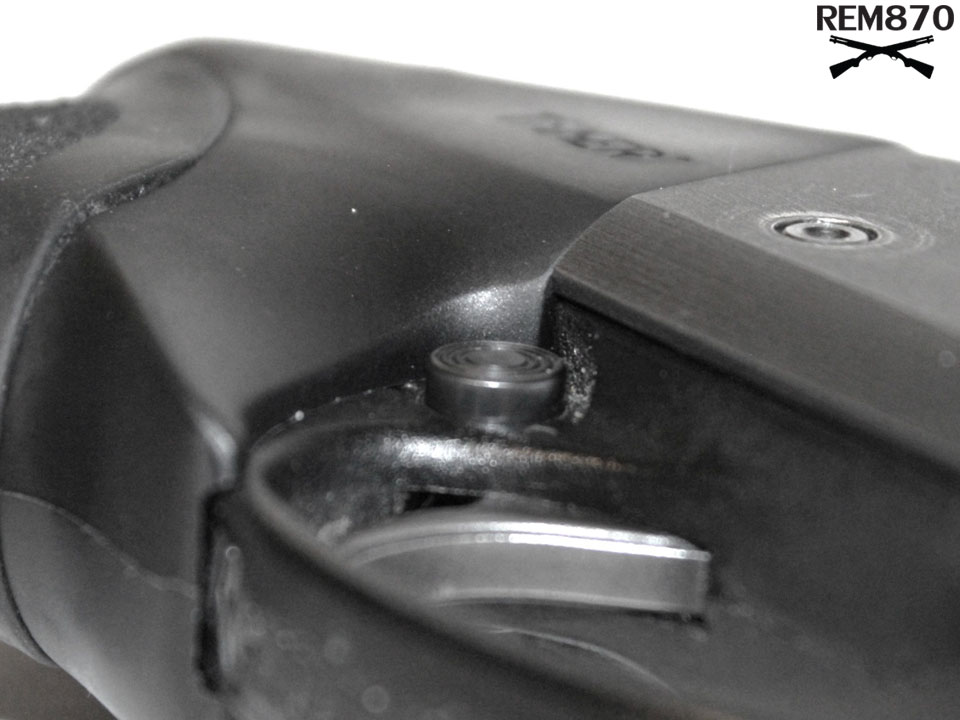
I can readily work the safety using the side of my finger, but I need to pull my fingertip back off the trigger to reliably actuate it, and then get it back for a proper trigger pull. I can’t snap the safety off and fire as rapidly as I can with a traditional stock, but it’s still pretty quick with a bit of practice. Some may find that an enlarged safety button makes operating the safety easier or faster with this grip, but now that I’ve gotten the hang of it, I’m just fine with the factory button.
The size & shape of the Hogue grip makes re-engaging the safety with the thumb (or disengaging with the thumb, for left-handed users) fairly easy. A bit of a grip shift is required, but again, it’s pretty straightforward if you practice. Re-engaging the safety one-handed is easier than I expected, as the tacky rubber helps me keep ahold of the gun as I shift my grip to reach it.
As for the slide release, the Hogue pretty well exemplifies the potential issues brought up above. The overhang means I have to release my grip briefly to get around it, and I have to have a good hold of the gun with my other hand to unlock the action with any kind of grace or speed. Additionally, the tacky rubber grip material extends up to the underside of the overhang, adding some less-than-helpful friction to the procedure; and with the complex grip shape, I have to pay a bit of attention to get my hand back where it needs to be with each finger in its respective groove. That said, the Hogue’s overhang is not too severe, and the top of the grip blends well with the lines of the receiver, so my thumb doesn’t have to travel too far to get around it. With practice and a good hold on the fore-end, I can get to the slide release reasonably quickly and easily.
So long as you figure out some slightly different techniques and practice with them, the Hogue doesn’t interfere too much with the gun’s controls. It’s not perfect in this department, but it’s very definitely not the worst.
Blackhawk:
Because the gun recoils back into the Blackhawk’s grip frame, the frame needs to be wide enough to slide over the safety, as well as having enough structure to support and guide the aluminum mounting block & the attached gun. As a result, the sides of the pistol grip overhang the safety button quite a bit, leaving it entirely out of reach of the side of the trigger finger.
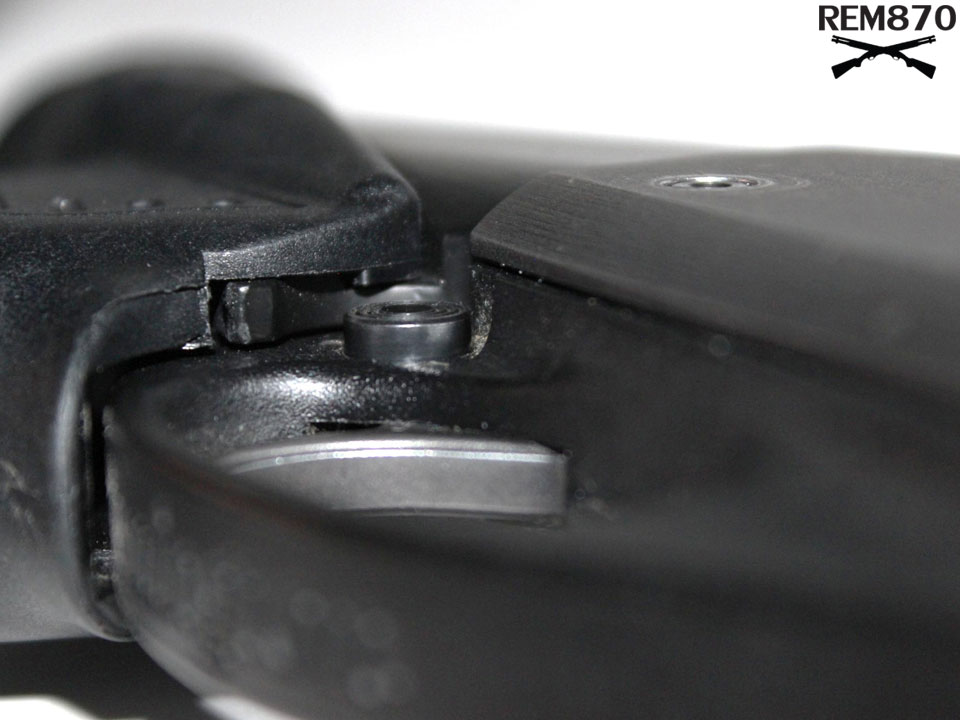
To disengage it, I have to completely take my finger off the trigger and use its tip to push the button over. And thanks to the pistol grip‘s girth, I have to shift my grip in order to get at the other side with my thumb, even with my large hands. Re-engaging the safety without holding onto the fore-end is particularly awkward.
This would be a situation where an extended safety button could really help, but the Blackhawk’s moving grip will hit most extended safeties, potentially damaging the grip and/or the safety mechanism. A few extended safeties are said to be compatible (the flat-head Wilson Combat safety has been recommended for use with Knoxx stocks), but as they have to be short enough to clear the moving grip, they’re not going to be as much of a help as a taller safety would be.
The BreachersGrip isn’t great when it comes to the slide release, either. With the recoil extension sticking quite far out to the rear, there’s really no way to slide the hand up and over the receiver. It helps a bit that the grip surface is a hard plastic that skin can slide easily on, but chambering that first round is still noticeably slower and more complex. If you’re using this grip on a fighting gun, you’ll definitely want to either chamber a round or drop the hammer before any action is expected to start.
Out of all of these grips, the Blackhawk offers the worst control ergonomics by a good margin. It’s not hopeless, especially with some practice, but it definitely gives up speed & simplicity points in exchange for its recoil-mitigating system.
Pachmayr:
The Pachmayr grip comes right up to the safety button, but it’s not too terribly wide, and there are circular safety cut-outs in the rubber on each side that provide a bit of clearance.
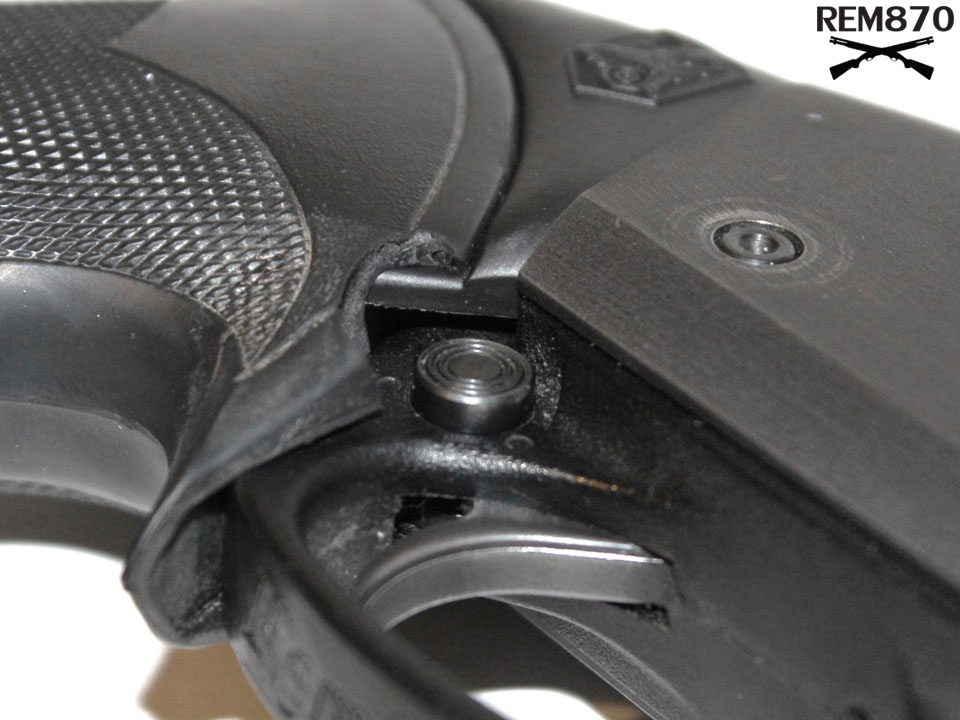
Between that and the flexible nature of the rubber, quickly disengaging the safety is fairly easily done with the last joint of my trigger finger. I do have to slip my finger back off the trigger slightly to reliably push the safety over, but this doesn’t slow me down much. A large-head safety could help here, especially for folks with smaller hands, or when adopting a very high grip. The cut-out in the rubber grip sleeve leaves plenty of room for one, and should help keep it from being too easy to disengage accidentally. I don’t think it’s essential though.
Reaching the other side of the safety with the thumb is easy enough. Doing so repeatedly can get a bit uncomfortable if you have large thumbs like mine that rub on the bottom of the receiver at this angle, but that’s an issue that’ll likely only show up in practice sessions, if at all.
Due to the complete lack of overhang and the higher grip location, sliding the hand up over the receiver while reaching for the slide release is a breeze. It’s even pretty do-able one-handed. The only problem I had was that when I slid my hand back to reassume a shooting grip, my middle finger tended to rub on the rubber flap sticking out below the trigger guard, and this could get a little uncomfortable after enough drill time. You could try trimming this down a bit, but cutting it too short will remove the cushion between your middle finger and the rear of the trigger guard. Since a pistol-gripped shotgun isn’t realistically intended for high-volume shooting anyway, I’d just leave it be.
Overall, the Pachmayr’s control ergonomics are quite good – probably excellent with an extended safety.
TacStar:
The TacStar pistol grip narrows very nicely as it meets the trigger guard, and the top of the grip isn’t very wide to begin with.
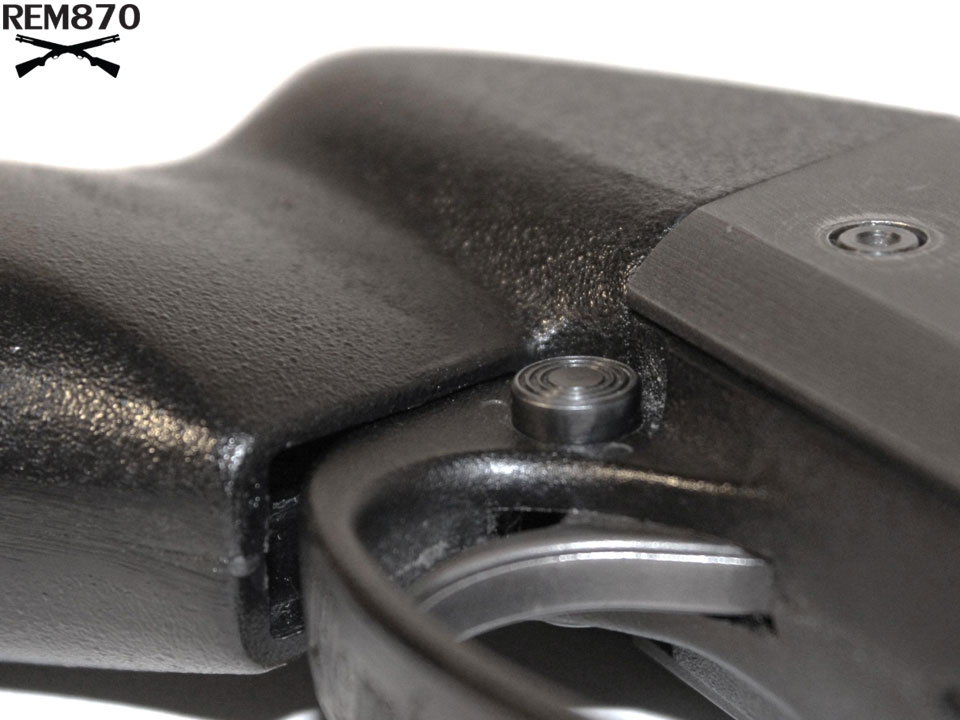
As a result, the factory safety is extremely accessible, and delightfully quick & easy to manipulate in either direction. It winds up perfectly placed under my finger when I have the tip on the trigger, yet is safely out of contact when I index my finger on the trigger guard or the bottom side of the receiver. My thumb is out of contact with the button when I have a firing grip, but just the slightest shift of my hand is sufficient to reach it for re-engagement. Re-engagement is quite easy even when holding the gun one-handed. This grip is far and away the best of the four when it comes to safety accessibility – an aftermarket extended safety is not only unnecessary, it would probably actually be detrimental.
The TacStar grip does have a bit of an overhang, but it’s not too terribly awkward to reach over when manipulating the slide release. It’s similar to the Hogue as far as technique, but with the smooth plastic grip surface and the more simplified grip shape, the movements are a little more straightforward. Unlocking the slide while holding the gun one-handed is still pretty sketchy, unfortunately. A strap passed through the loop on top of the grip significantly interferes with reaching the slide release if it is looped around the user, but seems to have little effect when it is hanging freely.
In short, the TacStar is surprisingly very ergonomic with regard to the gun’s controls; easily the best of the four with the factory safety button, and second-best with the slide release.
Live-Fire Testing:
Now for the real question; how are these grips to shoot with? Even with mid-range loads, 12ga shotguns have recoil on par with magnum rifles; and as a pistol grip makes the gun even lighter while removing the ability to brace it against the shoulder, they have a well-earned reputation for being pretty punishing. All of the grips reviewed here have features that claim to alleviate this discomfort, and I was eager to see if they delivered on those claims.
I primarily used three different loads to evaluate these grips. These are special recoil test handloads that I developed for this and future reviews. These shells contain very junky mixed-size scrap lead shot that I get cheaply from a local recycling outfit (no need for perfect patterns here), but the shot and powder charges are hand-weighed to extremely exacting tolerances in order to obtain highly consistent recoil impulses.
The first of these is a light one-ounce load rated at 1180 FPS, which would produce about 15 – 18 ft-lbf of free recoil energy in an 870 in this configuration (depending on exactly which grip is used, and whether the magazine is full or empty). This duplicates a common 2 ¾-dram equivalent one-ounce target load that’s fairly low-recoil, and would be a decent choice for recreational shooting with a pistol-gripped shotgun. There are lighter loads available if you’re just plinking, but I chose to go with this 1-ounce load because in addition to duplicating something that’s commonly available on store shelves, its recoil is similar to a number of low-recoil slug & buckshot loads available for the 12ga.
But to see how really light plinking loads felt, I also put together some 3/4-ounce shells rated at 1200 FPS. Most factory 3/4-ounce 12ga loads are special-order items from smaller companies that rarely show up in stores; but they’re very easy and inexpensive to handload. With a payload weight most commonly found in 28ga & .410 shells, they’d only produce around 10 – 12 ft-lbf of free recoil in this gun, making them perfect for plinking and high-volume practice. The Winchester low-noise low-recoil 26 gram (roughly 15/16-ounce), 980 FPS target loads have about the same recoil if you’re limited to off-the-shelf ammo, or want something subsonic. This recoil level is also similar to that of specialty ultralight or mini 12ga buckshot loads. Not all of these will run reliably in an 870, but some – like the 6-pellet 00B 2 ¼” Herter’s shells carried by Cabela’s – do, and they can be a viable defensive option for extremely recoil-sensitive folks.
The third load contains 1 ¼ ounces of shot loaded to 1305 FPS. Free recoil energy in this gun is roughly 30 – 36 ft-lbf, which is comparable to what common, full-power 12ga express buckshot shells (such as 9-pellet 00B, 16-pellet #1B, or 24/27-pellet #4B) will generate. In this gun, its kick is almost exactly the same as that of the military 9-pellet 00B shells manufactured by Winchester. Its recoil impulse is also in the ballpark of a number of non-magnum 1-ounce slug loads.
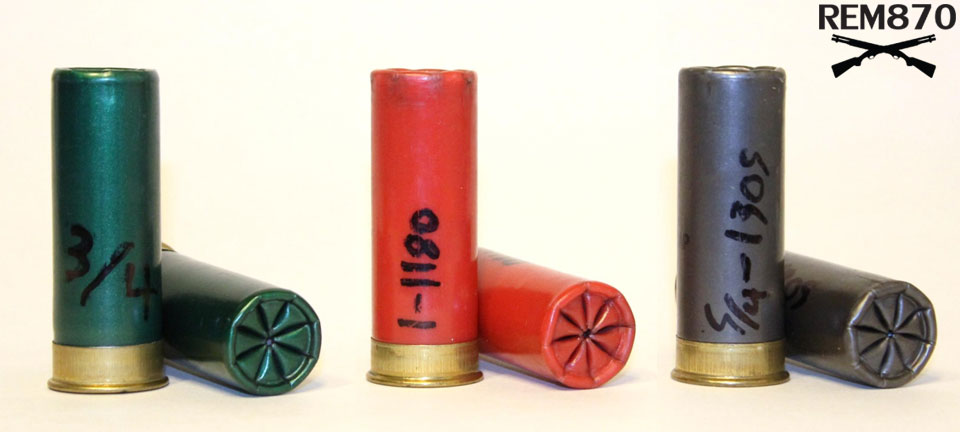
I’ll note that the above velocity ratings (and the recoil energies calculated from them) come from load data developed using 30” test barrels. A bit of that velocity will be lost in the 18.5” barrel on this gun, probably somewhere in the ballpark of 50 – 100 FPS depending on the specific pressure curves of the three loads. Free recoil energy will likely be reduced by something like 1 – 5 ft-lbf (this is difficult to precisely predict because a shorter barrel reduces the muzzle velocity of the payload, but increases the peak exit velocity of the propellant gasses). I did not attempt to adjust for this, since the goal was to duplicate factory loads, whose velocity ratings are also typically measured from 30” test barrels.
Hogue:
The Hogue pistol grip performed well and shot reasonably comfortably. The elastomer cushion built into the top of the grip did a good job of protecting the common pressure point between my thumb and index finger. The rest of the backstrap is simply a thin layer of rubber over rigid plastic however, so the lower part of my hand did receive a sharp smack from the recoil. Still, with the hand-filling grip shape and no pressure point up top, that smack was distributed over a pretty large area. With a support hand on the fore-end, both the ¾- and 1-ounce loads felt fine, while the heavier 1 ¼-ounce shells had a pretty healthy snap to them. If I shot too many of the heavy loads too quickly, the cumulative recoil started to get uncomfortable, but not unmanageable; I could handle and shoot the gun effectively even if I wasn’t exactly enjoying it.
But when I let go of the fore-end and shot the gun with a one-handed or handgun-style two-handed hold, it was a different story. When the gun is held this way, the shooter’s hand must apply a torque at the pistol grip to keep the gun upright. To apply this torque, the fingers pull backward at the top of the front strap, and the base of the hand (specifically the ulnar side of the carpus) presses forward against the bottom of the grip’s backstrap.
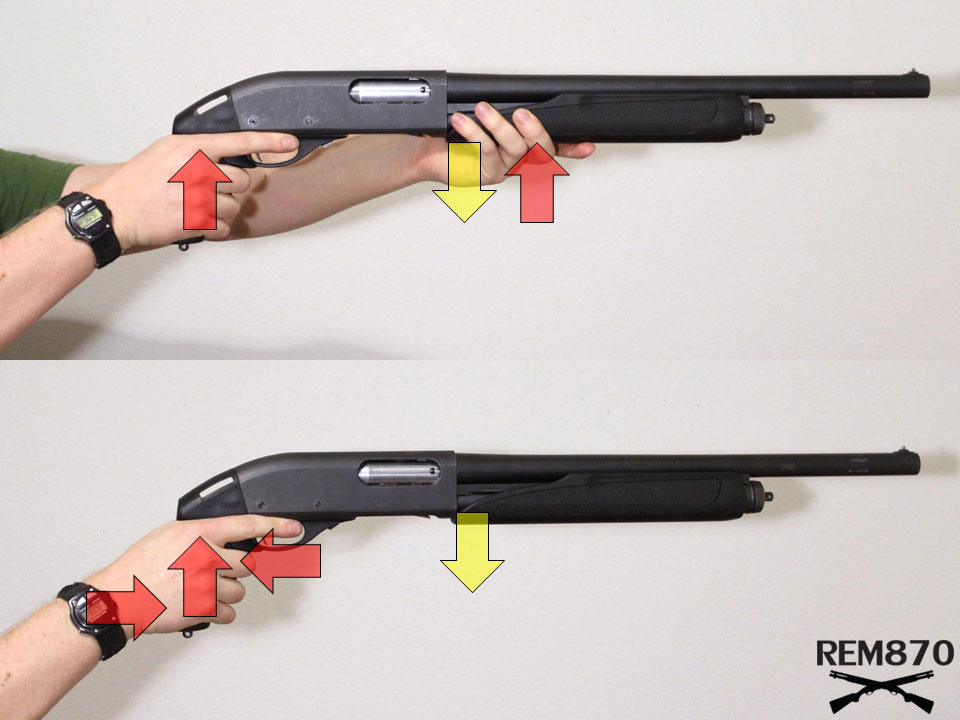
This had the effect of “pre-loading” the Hogue’s pronounced heel against my carpal bones, and when the gun was fired, that was where the kick was concentrated. ¾-ouncers still weren’t bad, but the one-ouncers had some sting, and the 1 ¼-ounce shells really got to be painful. One-handed shooting was doable, but definitely unpleasant, and I’m sure I would have been a bit faster without the pain. If you’re running the Hogue grip, you’ll definitely want to stick to a normal two-handed hold with a support hand ahead of the gun’s center of gravity as much as possible (which, to be fair, is generally the most effective way to handle a long gun anyway).
I did try firing one-handed while pressing into a shooting sling looped around my shoulder, and that was much more comfortable, since the rearward force applied by the sling at the top of the grip took the pressure off my palm at the heel, shifting the majority of it up to between the thumb & trigger finger where the Hogue’s recoil cushion is located.
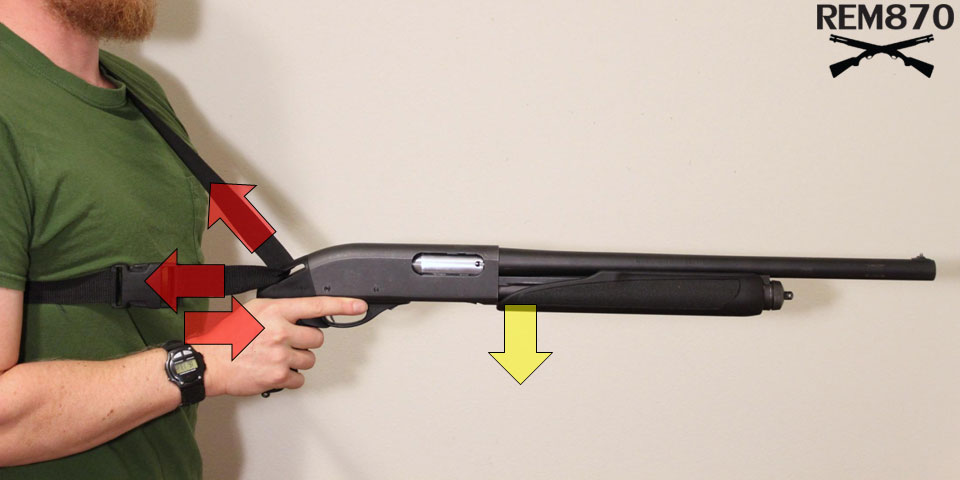
While the Hogue wasn’t always comfortable, it was still controllable and effective with all my test loads, the rubber grip staying securely put in my hand with any shooting hold. Realistically, a pistol-gripped shotgun is a “carry a lot, shoot a little” concept. If you are shooting high volumes, it’s almost certainly for recreational purposes or practice sessions, where you can simply stick to lighter-recoiling shells that don’t wear you out nearly as fast.
Blackhawk:
Initially, I wasn’t sure what to expect from the Blackhawk’s spring-loaded recoil-mitigating system. While I knew that similar spring-loaded stocks had their fans, the spring in this pistol grip was very stiff, requiring a good portion of my body weight to collapse the mechanism. Without a shoulder stock to brace against, I wasn’t sure that just the strength and inertia of my arm could provide enough opposition to allow the spring system to actually do something useful.
Turns out, the spring system does its job quite well. It’s obvious when shooting that the rest of the gun is reciprocating relative to the grip under recoil. I did notice that the mechanism travels along a slight upward angle relative to the bore axis, which seems to encourage straight-back recoil and discourage muzzle flip. The Knoxx’s relatively high mass certainly helped to dampen recoil as well, the extra ounces yielding an average reduction in free recoil energy of about 10% compared to the other three grips. As a result, all loads – from the super-light ¾-ouncers to the heavy 1 ¼-ouncers – were quite comfortable with any two-handed or one-handed hold I tried. I really felt like I could keep at it all day if I wanted to, and that made shooting with this grip just plain fun.
The only discomfort I experienced was with rapid one-handed shooting. Since that hold required a lot of pressure between the grip’s heel and the base of my palm to keep the gun upright, and the size of the grip made it difficult to have a really secure grasp on it, the ridges at the heel of the grip began to rub me a bit raw as they shifted around under recoil with the heavier loads. This really wasn’t too bad though; I suspect most folks would get tired of holding a 7-pound shotgun one-handed long before the rubbing became a problem.
Just for giggles, I loaded up some 1 ½-ounce and 3” 1 7/8-ounce magnum shells, and fired them one-handed. These were very heavy loads; at its rated velocity, the 1 7/8-ounce load would have been generating almost 65 foot-pounds of free recoil energy in this 6.5-pound gun. That’s about double the recoil of the 1 ¼-ounce test load, and well into elephant gun territory. The massive recoil really drove the gun back hard, and probably worked the spring system to its limits, but apart from some rubbing from the ridges on the heel of the grip, I was just fine afterward. I wouldn’t recommend regular use of loads this heavy just because it takes quite a bit of time to recover and get the gun back on target, but it is a testament to how effective the Blackhawk grip is at spreading out recoil and reducing its intensity. I would never have tried this with any of the other three grips.
However, while the spring system did greatly mitigate recoil, it also allowed much more recoil movement. As a result, the gun didn’t feel as controlled as it did with other grips. I kind of had to give the thing a split-second to settle down before cycling it and bringing it back onto target. Plus, the large, slab-sided plastic grip didn’t stay put in my hand very well during all this, and I sometimes had to re-acquire my hold before taking the next shot. I’m probably making this sound worse than it actually was, though. More than anything, the Knoxx grip just had a very different feel from what I was accustomed to. It really didn’t seem to slow me down all that much once I got used to it – at least compared to how rapidly I could shoot with other pistol grips.
Pachmayr:
Despite its relatively simple design, the Pachmayr turned out to be pretty comfortable no matter how I was holding the gun. Between the grip’s forward-curving shape, the inherent give in the rubber, and the internal void under the upper backstrap, recoil always seemed to distribute itself evenly over my entire hand, and there wasn’t the “shock” one would expect from a more rigid grip surface. The recoil was all there – it wasn’t soaked up as it had been with the Blackhawk grip – but the edge was definitely taken off of it, and no one area of my hand was “singled out” enough to make things unpleasant. Plus, thanks to the firm, checkered rubber, the gun never felt like it was trying to get away from me, even with heavier loads.
The lack of any overhang above the backstrap also offered some options for how to hold the thing. I could hold high to minimize muzzle flip and shoot quickly in exchange for more of the recoil energy coming straight back at me; or I could hold lower, giving the gun more freedom to recoil and taking some of the stress off my hand, while reducing my maximum effective rate of fire. Either way, the recoil was manageable and distributed well, and the gun came back onto target easily and naturally.
TacStar:
The TacStar grip was a real let-down at the range. ¾-ounce loads were tolerable, but the 1-ounce loads were quite uncomfortable, and started becoming painful if I fired more than a few in quick succession. The 1 ¼-ounce loads were painful from the first shot, even with a good two-handed hold. The angle and heel swell that are said to “distribute recoil energy evenly” for “painless positive control” do nothing of the sort. Instead, they encouraged my hand to slide upward, jamming my thumb and trigger finger bones into the hard plastic overhang with every shot.
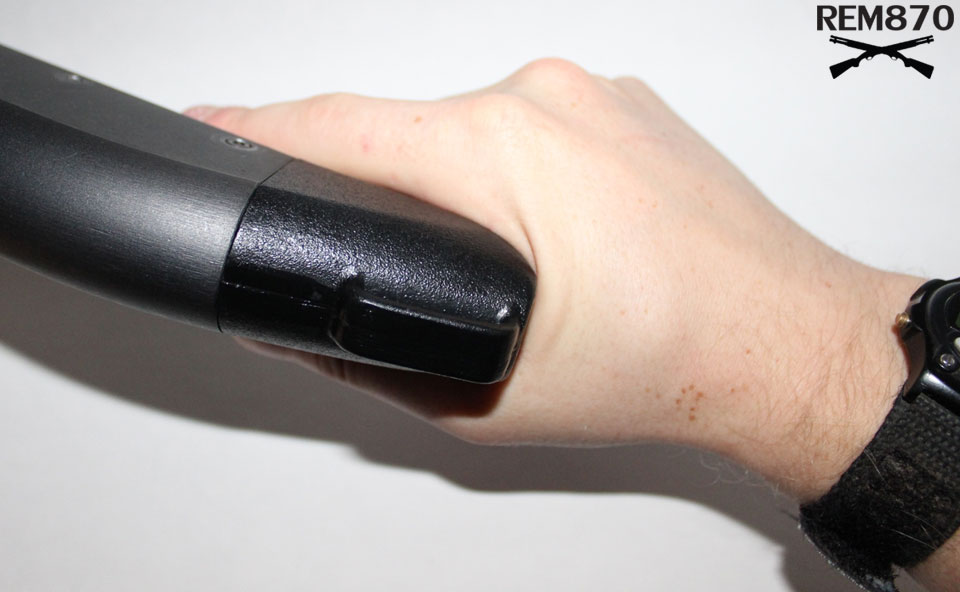
And if I shot one-handed, holding the gun so that there was less initial force between my thumb & trigger finger, the hard, pronounced heel swell pounded against the base of my palm – while the overhang continued hammering into me up top. I only fired two or three 1 ¼-ounce shells that way before I just had to stop.
I tried using a shooting sling, but since the top-mounted sling only served to pull the grip harder against the top of my hand, it just made the pressure point there even worse.
Function & Reliability:
This may seem like an odd thing to get into in a pistol grip review. As long as the grip isn’t literally breaking off under recoil, how would it affect the function of the gun itself – especially a manually-operated pump-action? Well, the fact is, it can. During my initial range testing, issues arose that were common enough that I loaded up many more shells and undertook a whole separate round of live-fire testing specifically to get a better idea of the severity of these issues, examine how the individual features of these pistol grips played into the malfunctions, and explore potential ways to remedy the problems.
While at the range, I noticed that with some grips, the gun’s action would come open under recoil. In some cases, when I held the gun firmly and solely by the pistol grip, the action was able to open far enough to fully extract the fired hull. Sometimes the hull would eject, but other times the self-opening bolt didn’t have quite enough speed, and caused a stovepipe that I had to clear before continuing. This is not an issue with the bolt’s lock-up; it happens because the 870’s slide is unlocked right as the hammer falls. As the gun recoils, the slide recoils along with it, since it is already in its fore-most position; but then when the gun’s recoil is arrested, the unlocked slide will want to continue traveling backward. This is actually the same general principle that a short-recoil semi-auto gun operates on. If the 870 has enough recoil movement and then stops sharply enough, and there isn’t a hand on the fore-end to control it, the slide can have enough energy to re-cock the hammer and open the action. Unsupported shooting with a pistol grip – especially if that grip has a spring or cushion to soak up recoil – creates ideal circumstances for this self-opening to occur.
In addition to stovepipes, the rapid self-opening action also caused some no-feed malfunctions. This type of malfunction has been explained in detail on this site before (link to article: www.rem870.com/2015/12/14/remington-870-modification-for-more-reliable-fast-shooting/); but basically, it occurs when the shells shift forward relative to the receiver under recoil, and the action is brought open before the magazine spring can push them back. This results in the next shell in the magazine sitting up on the forward shell latch, rather than feeding onto the carrier when the rear shell latch moves aside, and the action has to be closed and cycled again to get the shell out of the magazine and into the chamber. With a shoulder stock, this type of malfunction usually occurs when the user is trying to shoot an 870 extremely quickly – either hauling back on the fore-end before the trigger is actually pulled, or letting the gun recoil and using that momentum to slam the slide rear-ward. But in the case of these pistol grips, the action was opening itself so quickly that it was causing the same problem.
The Blackhawk BreachersGrip was the big troublemaker here. Its spring system gave the gun a lot of initial rear-ward travel under recoil, and then a fast rebound with minimal dampening. As a result, the action was very prone to self-opening and triggering no-feeds when fired without a hand on the fore-end. Auto-opening were nearly unavoidable when shooting the 1 ¼-ounce shells one-handed, and even occurred sometimes with the light 1-ounce loads. I tried a more relaxed hold that allowed the gun to recoil more without being brought up as sharply, and switching to a stronger magazine spring (a 5-round spring from a Wilson Combat +1 extension kit); but the gun would still not run very reliably without a hand on the fore-end.
Since the primary point to a pistol grip on a fighting shotgun is to make the gun usable in cramped quarters where you may need to shoot without an ideal stance or a hand on the fore-end, this is kind of a deal-breaker in my eyes when it comes to serious duty roles (and it doesn’t help that Blackhawk’s marketing talks up how this grip is supposed to be amazing for one-handed operation). If you need to shoot heavy loads one-handed, this grip just isn’t reliable. And if you switch to very low-recoil loads that don’t have enough kick to cause these malfunctions, well, why deal with the bulk & weight of the spring-loaded Blackhawk? Those shells are perfectly comfortable and controllable with a more traditional pistol grip that’s much lighter, smaller, and less expensive.
The Pachmayr grip also occasionally opened the action and caused no-feeds when I fired the heavy 1 ¼-ounce loads one-handed. It wasn’t nearly as frequent as with the Blackhawk, as the rubber grip & air pocket didn’t jerk the gun back & forth as far or as sharply, but no-feeds were still just common enough to concern me. The malfunctions normally occurred if I held the gun very firmly, bracing it so that its recoil velocity was arrested very sharply. Giving the gun more freedom to recoil helped, but didn’t completely solve the issue. Switching out my 4-round magazine spring for a 5-round spring seemed to be the ticket. With the heavier spring, I would only see no-feeds if I intentionally tried to trigger them by pushing very deliberately into the recoil. When I let the gun recoil normally, it ran reliably with the heavier spring. In a real-world situation, if you have time and space to square up and firmly brace a pistol-gripped shotgun against recoil as I was, you’ll also have time & space to put a hand on the fore-end, so I’m not concerned about reliability with the Pachmayr so long as the gun has a decent magazine spring. I’ll note here that my 4-round mag spring is pretty tired, not to mention missing a couple coils on one end, so even a new standard-stiffness 4-round spring would probably be a significant improvement. I only really use this spring for hunting or clay shooting; if I were to configure my 870 for defense without a magazine extension, I would get a replacement spring (or use my 5-round one) anyway.
I managed to get a single auto-open & no-feed situation to occur with the Hogue Tamer grip, but it required me to go back to the weaker mag spring, shoot the heavy 1 ¼-ounce loads with a full magazine, and really push into the recoil as firmly as I could. And on top of that, it took a lot of attempts before I even got one malfunction. Considering how improbable the issue was when I was deliberately trying to induce it, I have no concerns about it happening during normal use.
I didn’t even bother trying to get a no-feed with the TacStar. The hard plastic has no give with which to assist the action’s auto-opening, and pushing into the recoil of a heavy 1 ¼-ounce load enough to make up for that would have been brutal with the horribly uncomfortable TacStar grip. No one with working pain receptors is going to be using this grip to shoot shells that heavy without a hand on the fore-end anyway.
Conclusions:
Well, that was a heck of a project! This review has been about a year and a half in the making – even longer if you count the planning & emails that went on before the grips were delivered. I had fun & learned a lot while testing, researching, and shooting; and I sincerely hope the end result proves useful to folks. Even if you’re not looking at one of these specific four pistol grips, this review should at least give you some things to look at & think about.
So to finally wrap up, here are my conclusions:
Among these four pistol grips, my favorite is the Pachmayr Vindicator. It’s a simple, effective, well-engineered design that handles smoothly, provides excellent grip without being gummy or grabby, and should fit a variety of hand sizes. While it doesn’t do away with the recoil, it does distribute it over the hand very well, keeping the kick manageable without compromising control, or adding a lot of moving parts that can fail. Its classic styling looks good on the venerable 870, and its compact size makes it easy to fit into tight spaces. It allows for outstanding access to the slide release and good access to the safety, and while it is slightly more involved to put on & take off than some of the others, it makes up for this by using just two very common screws that are easy to replace if needed, and permitting normal removal & replacement of the trigger plate assembly while installed. With its tough rubber & steel grip, the extensively-reinforced plastic upper piece, and the very sturdy joint between the two, I have no doubt that this is the toughest of these four grips by a good margin.
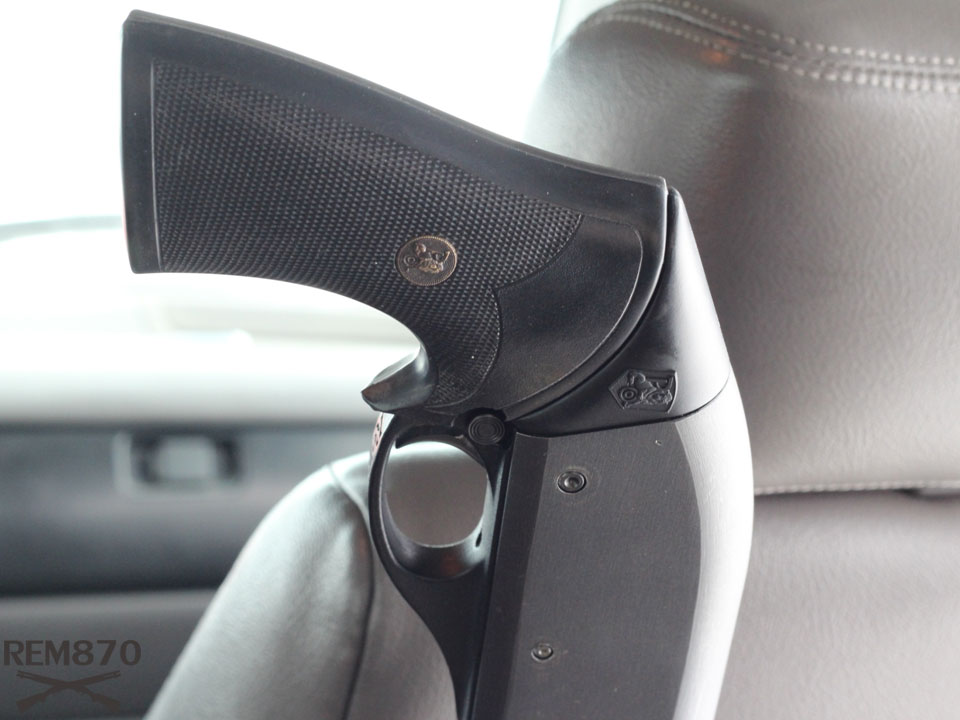
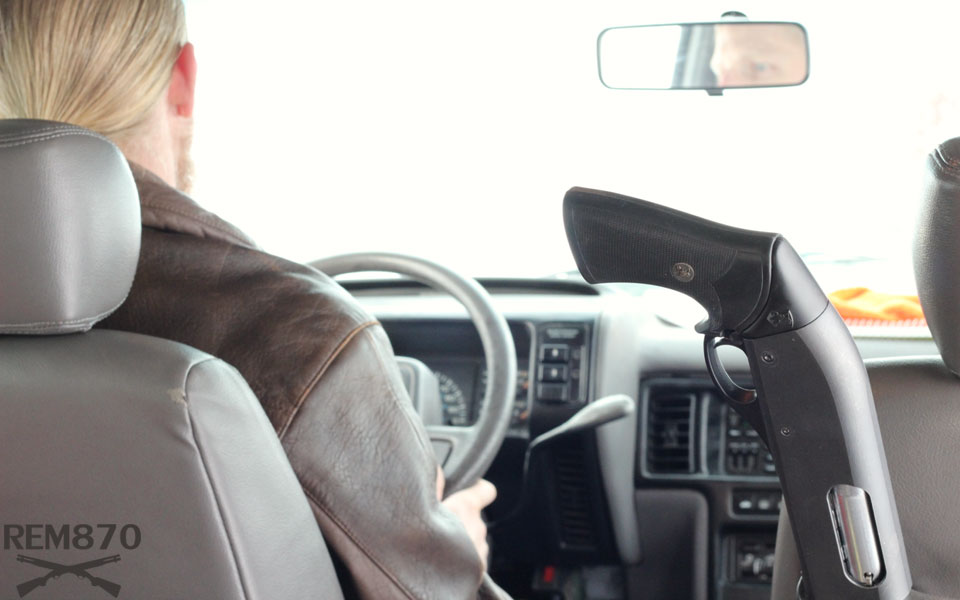
It is pricier than some others, and the lack of any built-in sling attachment points is a disappointment. All the steel & rubber also makes it several ounces heavier than many competing offerings, and you’ll want to make sure your magazine spring is strong enough to run reliably (although that’s really a no-brainer for any fighting shotgun). Still, if I needed a pistol grip for a serious fighting or defensive application, the Pachmayr Vindicator would be my first choice.
I also want to throw a nod to Pachmayr here. Their website and packaging make sensible, realistic claims about the Vindicator grip, and the product lives up just as described. No “tacti-cool” images, no physics-defying promises, no meaningless hyperbole, and no superlative buzz-words; just a straightforward, accurate description of a well-designed product.
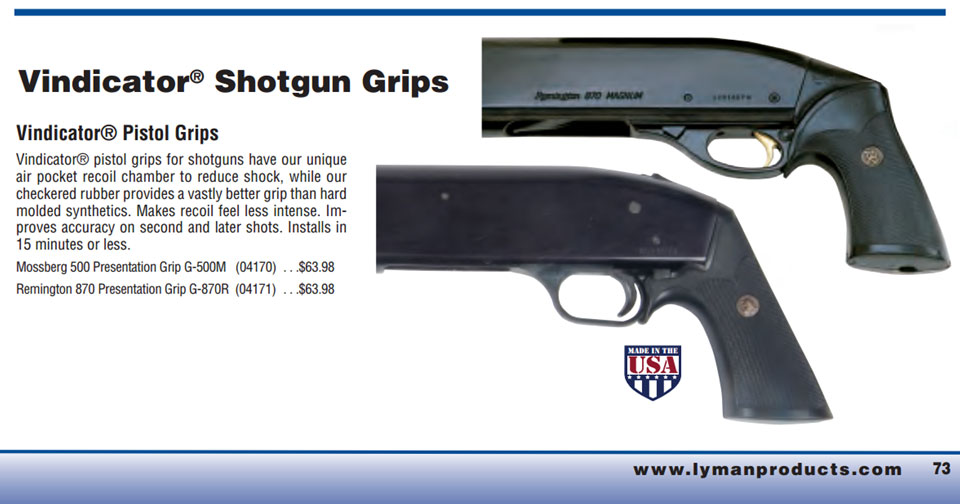
That is a rare breath of fresh air in the firearms industry, and I wanted to recognize Pachmayr for it.
The Hogue Tamer is also a solid option. It doesn’t feel as sturdy as the Pachmayr, and isn’t quite as comfortable to shoot – especially one-handed. And while its grip shape fits my hand pretty well, that may not be the case for everyone. Plus, the rubber is a bit tacky for my tastes, and it feels like it could be connected a bit more securely to the grip’s central structure. However, the Hogue handles well and shoots reasonably comfortably with a support hand on the gun’s fore-end (which is how a pistol-gripped shotgun is best handled anyway); and while one-handed shooting is unpleasant, the gun can still be used effectively this way. This grip is also fairly lightweight without being cheap or overly fragile, gives you multiple built-in options for attaching a sling (including that very nice heel stud), and is very easy to install and remove. Access to the gun’s controls is good with some practice, and its shape matches the lines of the 870’s receiver quite nicely.
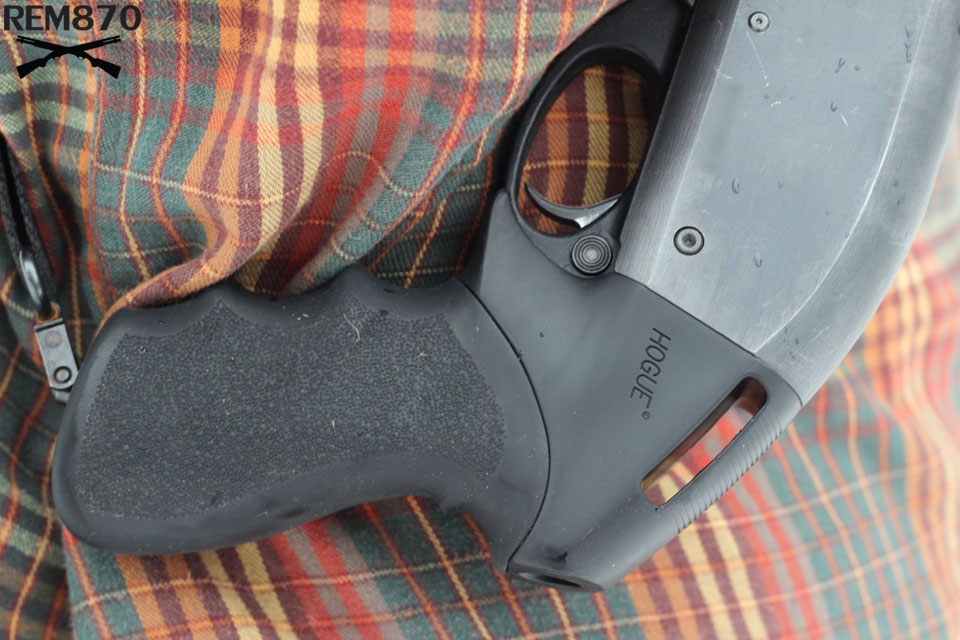
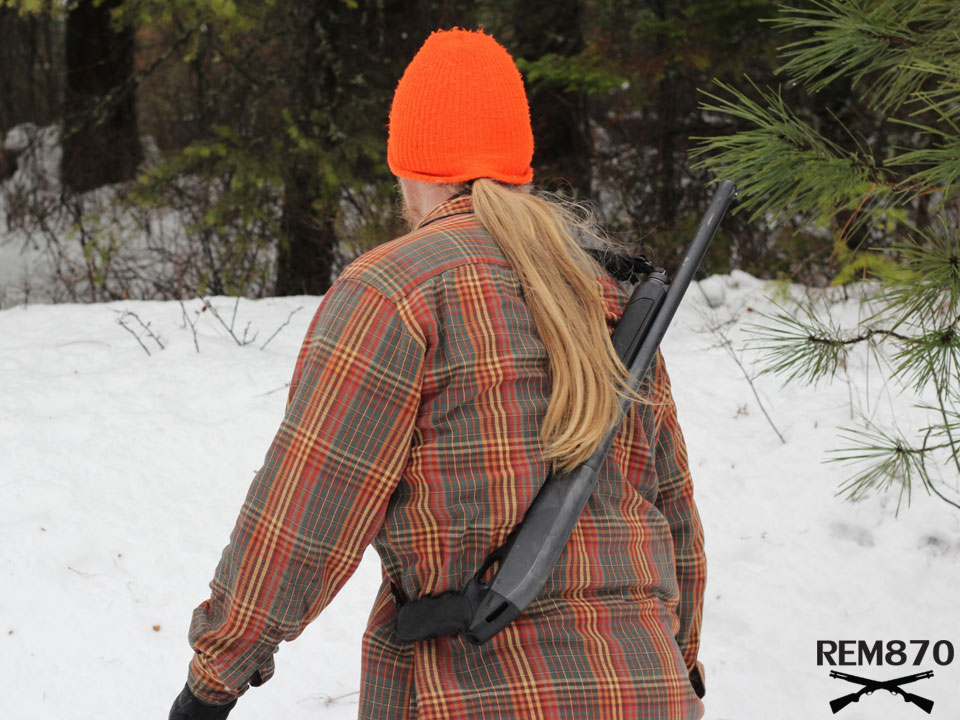
And with all that going for it, the Hogue Tamer is a terrific value at $25 – $30. Whether you need a serious working pistol grip on a budget (especially if you need to attach a sling), or you just want to pick up something shoot-able for “Rambo night” at the gun club while still having money left over for shells, the Hogue Tamer is an excellent choice, and I think I did well to select it years ago.
Out of the four grips tested here, the Blackhawk Knoxx BreachersGrip is by far the most pleasant to shoot with thanks to its recoil-mitigating spring system. But that internal spring system also makes it the largest, heaviest, most expensive, most complicated, and least ergonomic with regard to handling and control accessibility. Attaching and removing it requires a relatively large tool that’s much less practical keep on-hand in the field, and trying to install a sling mount between the grip & receiver could lead to headaches thanks to a shorter-than-ideal mounting screw that’s built into the assembled grip. Despite its marketing, I really don’t consider this grip to be suitable for serious combat, defense, or protection roles. There’s the big issue of the feed malfunctions it triggers when fired without a hand on the fore-end; but even putting that aside, I don’t really think the spring system is worth all the trade-offs for breaching or fighting roles. You’re realistically only going to be shooting a handful of shells when using a pistol-gripped shotgun in those applications, and in those small volumes, even full-power loads are perfectly manageable with a smaller, lighter, simpler, easier to handle, and more ergonomic pistol grip like the Hogue or Pachmayr.
However, I do think this is an outstanding grip for a range toy build or configuration, as that’s where you’ll be shooting the high volumes that make the Blackhawk’s recoil-mitigating system worth the trade-offs.
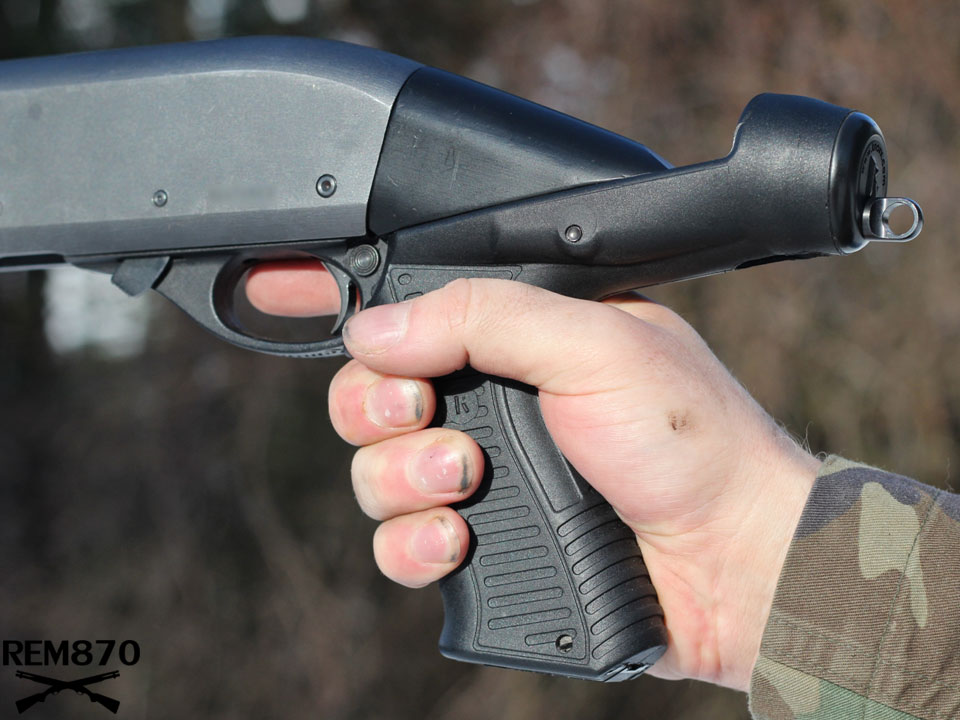
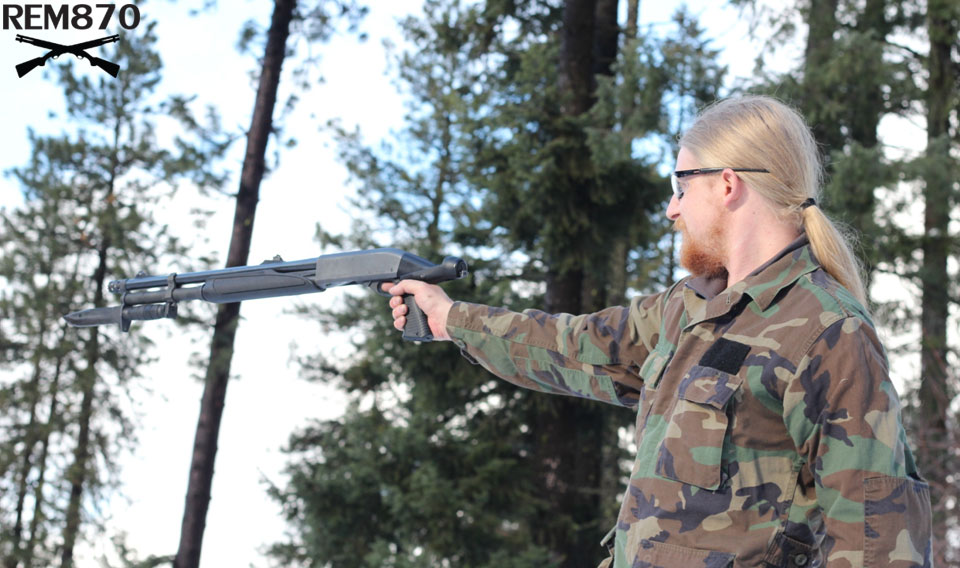
There’s absolutely nothing wrong with a gun that’s just meant to be fun, and I really did have a lot of fun shooting with this thing. It’s the only one of the four that I’d want to use for high-volume shooting, or with magnum loads. It handled everything with no pain or cumulative recoil fatigue, and I feel I could have handed the gun off to pretty much anyone without worrying that they would drop it or smack themselves in the mouth. It also gets points for being available in a 20ga version. It is a bit pricy, but you can get it for much less than MSRP if you hunt around or wait for sales, and for just going out and having a good time, I really do think it’s worth the money.
The TacStar Rear Grip was the one dud among the four. Though clearly made to a pretty low price point, I was initially encouraged by its versatile grip shape that fit both small and large hands, and the fact that it allows for excellent access to the gun’s controls. It’s also very lightweight, and the low price tag is definitely an attraction. Unfortunately, shooting it turned out to be extremely unpleasant, making just about any off-the-shelf ammunition painful. Even recreational shooting with target loads wouldn’t be much fun with this grip, and trying to practice with full-power shells is sure to beat the shooter up and encourage flinching. The hollow plastic construction doesn’t seem to be very durable or put together very well, and the included mounting fastener offers marginal thread engagement in the receiver stud. The smooth plastic also doesn’t provide much traction, especially with wet or sweaty hands.
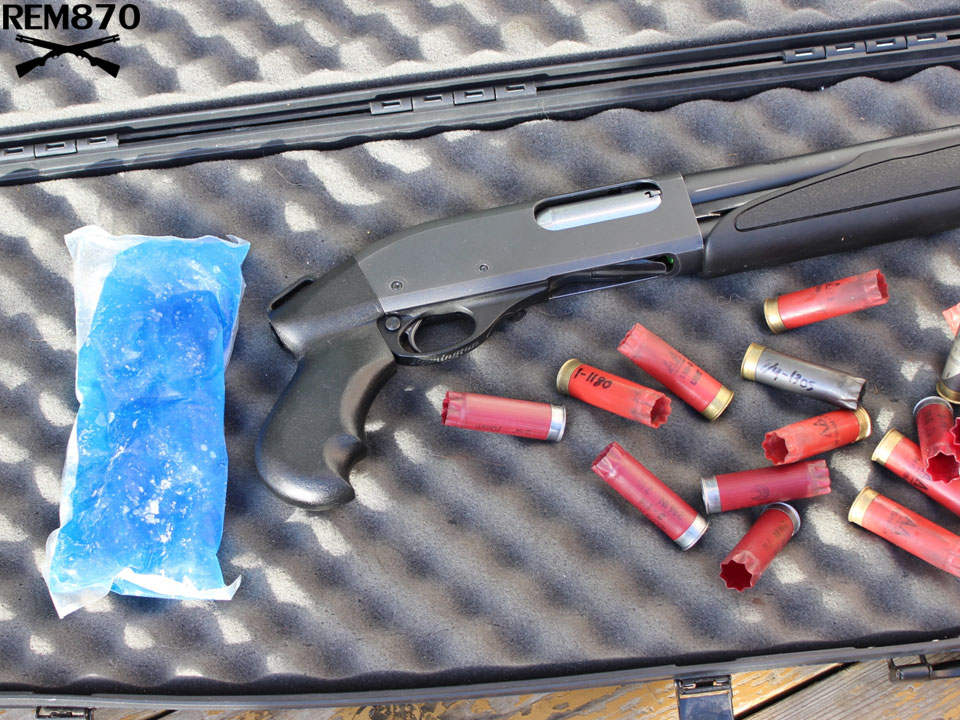
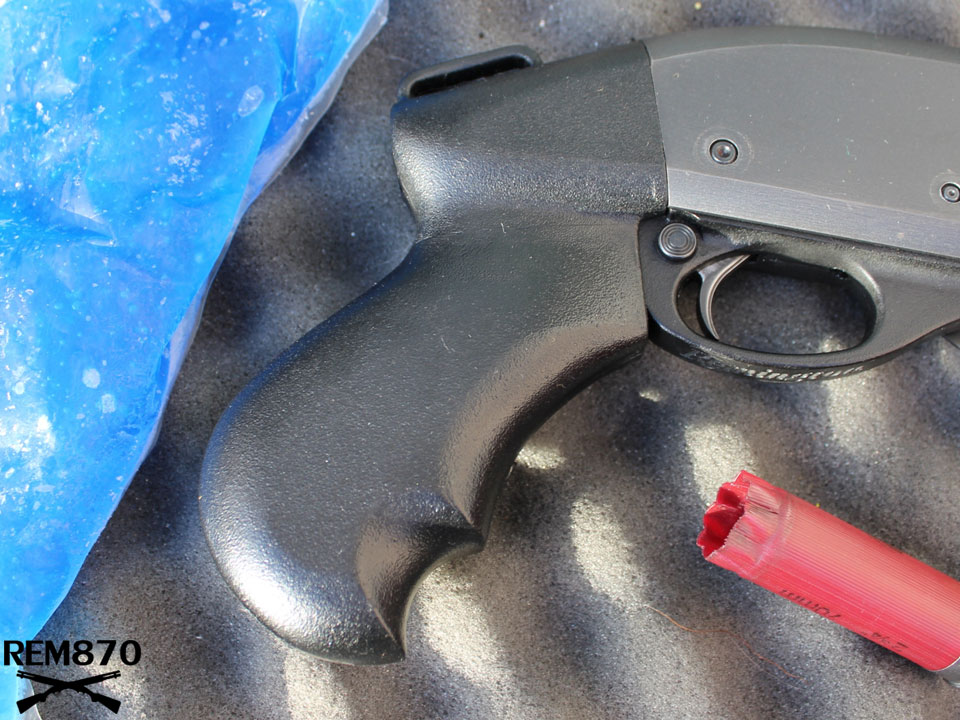
Since there are much better options – the Hogue Tamer, for example – that can be found for just a few bucks more, I see no reason to choose the TacStar.
-Synchronizor
Hogue Tamer Pistol Grip and Forend for Remington870
| You can get Hogue Tamer Pistol Grip Forend on Brownells |
Pachmayr Vindicator Grip for Remington 870
| You can get Pachmayr Vindicator Grip for Remington 870 on Brownells |


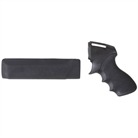
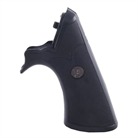
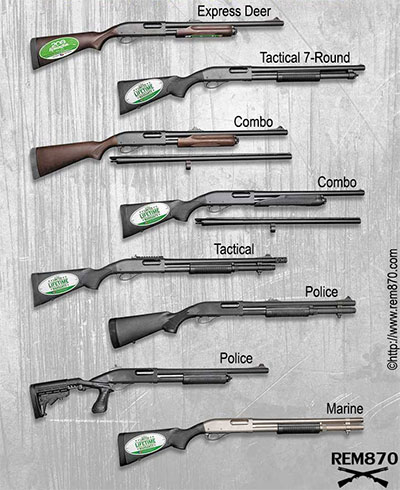
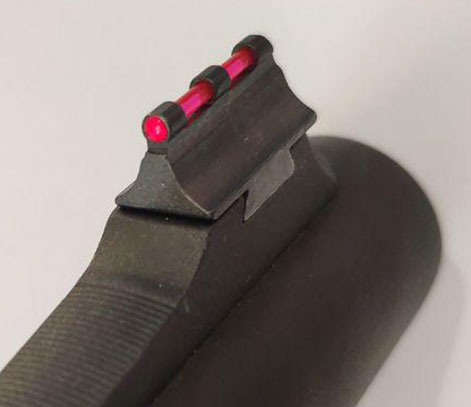
This was an excellent piece. Thank you for doing all the work it took to put this together, the quality of the final product really shows. I want to get front and aft pistol grips for my 870, purely for playing around, and this will help me choose.